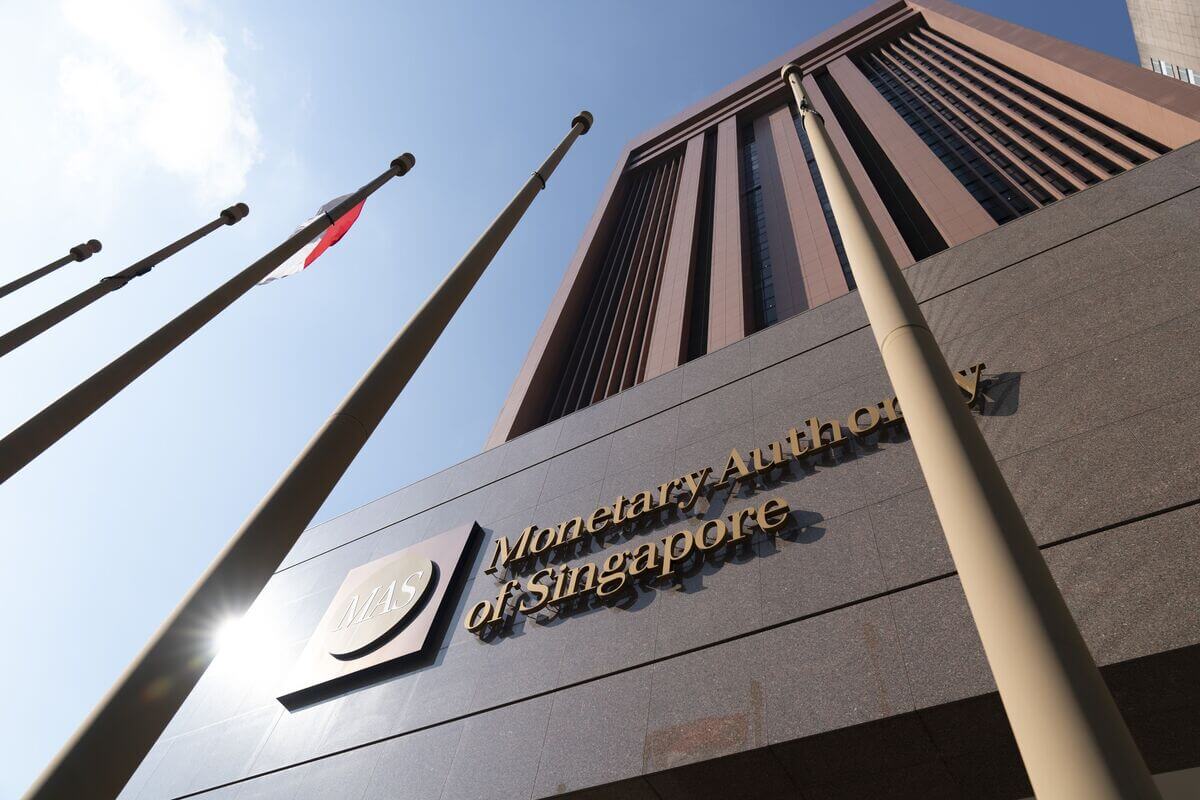Singapore’s central bank, the Monetary Authority of Singapore (MAS), opted to maintain its current monetary policy settings unchanged for the third consecutive time, indicating a cautious stance amidst persistent inflationary pressures. The decision underscores the likelihood that any potential easing of policy measures may be postponed to a later period.

Using the exchange rate as its primary policy tool rather than traditional interest rates, MAS announced on Monday that it would retain the slope, width, and center of the currency band. This strategic move aims to keep the local dollar on a trajectory of appreciation, thereby mitigating the impact of rising imported prices.
In its statement, MAS acknowledged the expectation for elevated core inflation in the earlier part of the year, with a gradual decline anticipated by the fourth quarter. Factors such as lower imported costs and a slower pace of domestic cost increases are projected to contribute to this moderating trend in inflation.
The decision aligns with the consensus among economists, with all 19 surveyed by Bloomberg predicting the unchanged policy stance. This marks the first policy review under the leadership of new Managing Director Chia Der Jiun and coincides with MAS’s transition to quarterly monetary policy reviews, a departure from its previous semi-annual schedule.
Khoon Goh, Head of Asia Research at ANZ Bank, characterized MAS’s statement as leaning slightly towards a hawkish stance, indicating no immediate inclination towards easing. He noted that upcoming events such as the US Federal Reserve’s rate decision and nonfarm payrolls report would likely influence near-term movements in the Singapore dollar.
This decision extends MAS’s pause in policy adjustments initiated last year after five rounds of tightening between October 2021 and 2022. Despite signs of resilience in Singapore’s economic growth, lingering price pressures persist, exacerbated by external factors such as the conflict in the Middle East, which threatens to elevate energy costs.
MAS’s continued emphasis on curbing imported inflation and domestic cost pressures suggests a sustained focus on price stability, reducing the likelihood of near-term easing measures, according to Brian Tan, Senior Regional Economist for Asean at Barclays Plc.
While inflation has shown some signs of easing in the latter half of 2023, it remains elevated. MAS’s preferred core inflation measure, excluding accommodation and private transport, accelerated to 3.3% in December, surpassing analysts’ estimates.
MAS maintained its 2024 core inflation projection at 2.5%–3.5%, with a forecast of 1.5%–2.5% when excluding the impact of this year’s goods and services tax rate hike. All-items inflation is expected to range between 2.5%–3.5%, down from the previous range of 3%–4%, largely due to declines in car ownership premiums.
Looking ahead, MAS foresees continued improvement in Singapore’s economy in 2024, maintaining its GDP growth projection of 1%–3%.
MAS manages the local dollar against a basket of major trading partners, adjusting its appreciation or depreciation pace by altering the slope, width, and center of the currency band. However, specific details regarding the basket composition and adjustment mechanisms remain undisclosed.
Nirgunan Tiruchelvam, an analyst at Aletheia Capital, highlighted Singapore’s attractive dividend yield compared to regional peers, particularly if the Fed reduces interest rates this year. Financial markets currently assign a 50% probability of a Fed rate cut as early as March, while expectations of rate cuts by the European Central Bank have also risen, influenced by recent dovish signals from ECB President Christine Lagarde.









